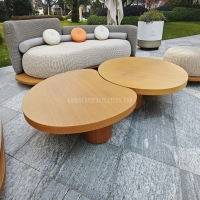Welcome to the website for landscape facilities products and knowledge.
How does the manufacturer address potential issues like warping or splitting in the table’s wood components?
Quality furniture manufacturers employ multiple sophisticated strategies to prevent warping and splitting in wood tables, beginning with proper wood selection and treatment. The manufacturing process starts with carefully sourced lumber that undergoes controlled kiln drying to achieve optimal moisture content levels between 6-8%, which matches typical indoor environments and prevents future moisture-related movement.
Manufacturers utilize quarter-sawn wood and engineered wood panels that provide enhanced stability compared to plain-sawn lumber. The wood grain orientation in table construction follows precise patterns that counteract natural expansion and contraction forces. Advanced joinery techniques including mortise-and-tenon joints, breadboard ends, and floating panel construction allow for natural wood movement while maintaining structural integrity.
Multiple protective layers including sealants, lacquers, and UV-resistant finishes create barriers against humidity changes and environmental factors. Manufacturers conduct rigorous quality testing by exposing prototype tables to extreme humidity cycles and temperature variations to identify potential failure points before full-scale production. Many companies offer extended warranties specifically covering structural integrity against warping and splitting, demonstrating confidence in their manufacturing processes. Regular maintenance guidelines provided to customers further ensure table longevity through proper care and environmental control.
Related search:

Recommendation
Elliptical metal outdoor table with nested design, resembling wood grain, round table